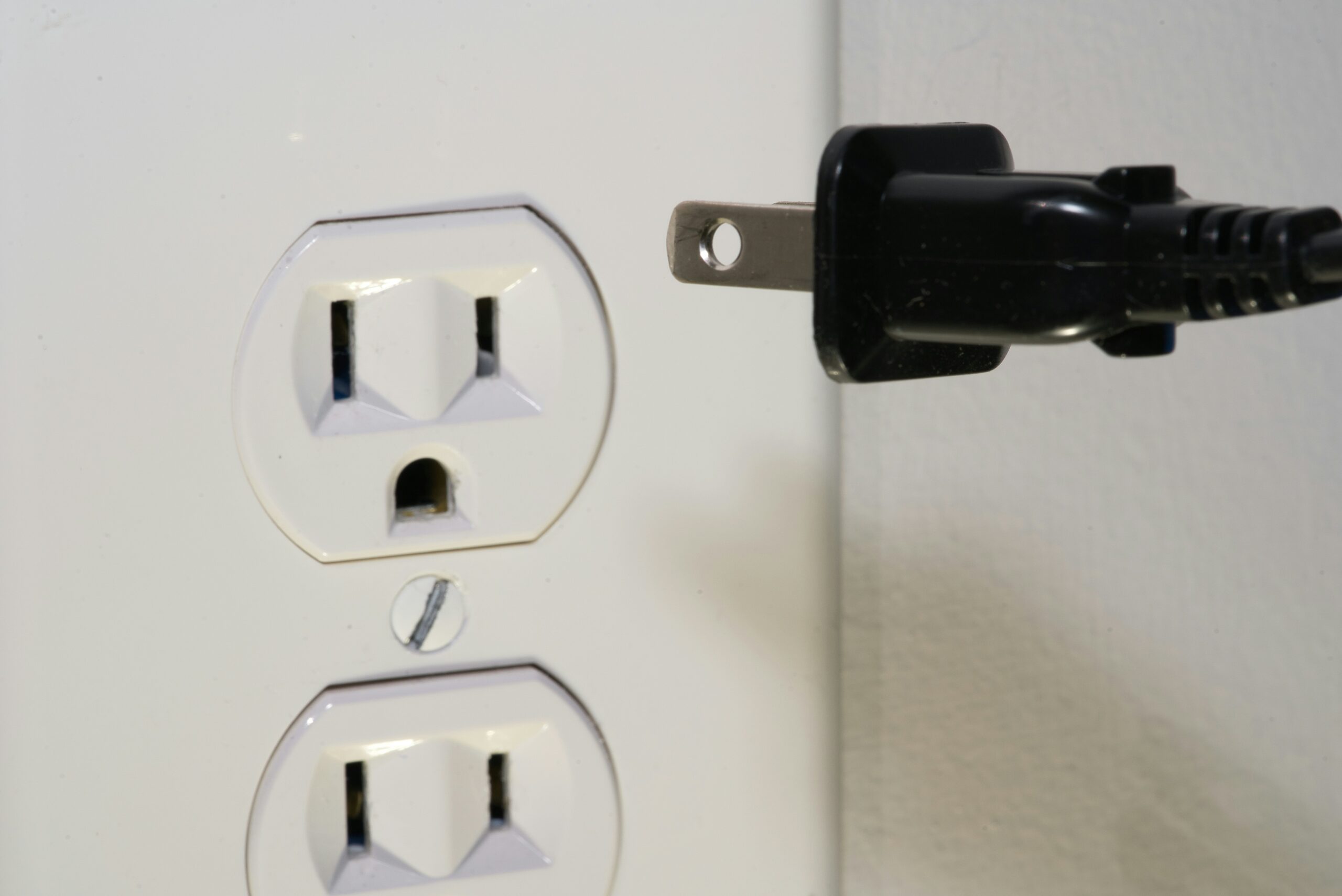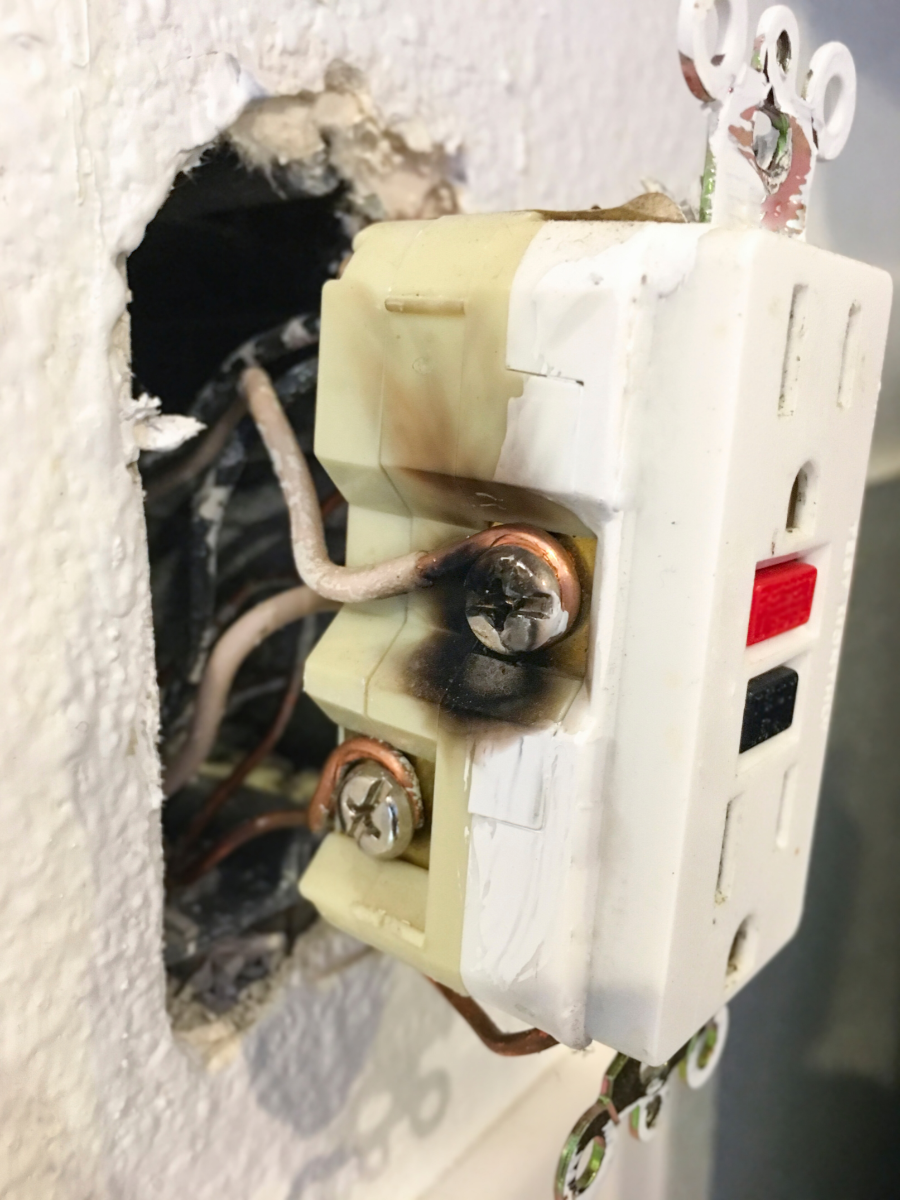 A wobbly outlet may not seem like an emergency, but it can have unexpectedly dire consequences. Even a little movement inside an outlet can damage wires and loosen connections, leading to scary sparking, arcing and even fire or shock hazards.
A wobbly outlet may not seem like an emergency, but it can have unexpectedly dire consequences. Even a little movement inside an outlet can damage wires and loosen connections, leading to scary sparking, arcing and even fire or shock hazards.
Keep your home safe by learning what causes loose electrical outlets, why they’re so dangerous, what warning signs to look for and how to fix and prevent them.
Quick Takeaways
- Loose outlets can cause dangerous arcing, posing serious shock and fire risks.
- Causes typically include worn-out screws, broken boxes and natural house settling
- Look for signs like wobbly receptacles, ill-fitting faceplates and plugs falling out easily
- For a DIY fix, kill the power at the breaker and try tightening the mounting screws
- Call a pro ASAP if you notice scorching, burning odors or a loose or damaged box
Why Loose Electrical Outlets Are Dangerous
Rickety receptacles are far from uncommon, especially in older homes that weren’t built to modern electrical codes. You may have even used them yourself without incident, in which case you might be understandably skeptical. So, why are loose outlets dangerous, exactly?
It’s simple. Wherever there’s a loose connection in your electrical system, there’s a place where current can jump — or arc — between gaps. Arcing outlets build up tremendous heat, which can melt insulation and possibly ignite anything flammable nearby.
As if an increased electrical fire risk weren’t enough, unstable outlets can also expose energized conductors that are normally hidden. This greatly increases the threat of shock or electrocution. Over the long term, using loose outlets can also damage your electrical system and shorten the lifespan of connected devices.
What Causes Electrical Outlets To Become Loose?
With so much at stake, you can’t afford to take any chances with your electrical equipment. To tilt the odds in your favor, watch out for these common causes of loose outlets.
1. Age and Normal Wear
Between vibration, corrosion and the normal rigors of long-term use, wear and tear is one of the top reasons why outlets come loose.
2. Weak or Damaged Outlet Box
Physical damage, poor anchoring and shoddy workmanship can all result in outlet box movement, making the receptacle itself worryingly unsteady.
3. House Settling or Structural Shifts
It’s not unusual for framing and drywall to shift or settle over time, jostling outlet boxes out of place and, in rare cases, even damaging them.
4. Overuse or Rough Handling
Wear and tear is to be expected, but constant, forceful plugging and unplugging is bound to put undue stress on outlets and mounting points.
5. Improper Installation or Hardware
From undersized screws to flimsy plastic boxes and incorrect mounting hardware, using the wrong materials can make an outlet far less secure.
Warning Signs of a Loose Outlet
 A sloppy power receptacle can go from harmless afterthought to imminent danger in a flash — literally.
A sloppy power receptacle can go from harmless afterthought to imminent danger in a flash — literally.
Prompt detection is key to keeping yourself and your loved ones safe, so stay alert to these telltale signs of a loose outlet:
- Noticeable outlet movement when inserting or removing plugs
- Power or extension cords coming unplugged too easily
- Misalignment or gaps between wall plate and outlet
- Screws that are stripped or won’t stay tight
- Sparks, scorch marks, burning odors or faceplate cracks
- Dimming, flickering lights or power disruptions
If you suspect a problem, shut off the breaker and go in for a closer look. Still can’t spot any clear signs of trouble? Flip the breaker back on and insert a plug-in testing device to do a quick outlet safety check.
How To Fix a Loose Outlet Safely
Attempting DIY electrical repairs usually isn’t a bright idea, but there’s no harm in trying this quick fix. To repair a loose outlet with no obvious signs of damage, follow the steps below.
Step 1 – Turn Off the Power at the Breaker
Never attempt to touch or work on a live fixture. For added safety, use a voltage tester to confirm the outlet is not energized.
Step 2 – Remove the Faceplate and Inspect the Outlet
Check carefully for issues like stripped or missing screws, snapped mounting ears and cracks in the outlet box.
Step 3 – Tighten Mounting Screws
Make sure all mounting screws are tightened firmly and evenly, but don’t go overboard. Overtightening can cause cracking.
Step 4 – Repair or Replace the Box if Needed
If the box is in poor shape, it’s best to replace it. Otherwise, use outlet shims, box extenders or retrofit brackets as needed to achieve a better fit.
Step 5 – Replace the Outlet if Damaged
Any outlet showing signs of arcing or heat damage should be replaced immediately.
Step 6 – Restore Power and Test
After reassembling the outlet and resetting the breaker, plug in a lamp or other small device to ensure everything’s working properly.
When To Call a Licensed Electrician
While it’s helpful to know how to fix a loose outlet, it’s even more important to recognize when to call an electrician. Not only can licensed technicians provide fast, safe, reliable repairs, but they can identify hidden wiring issues and other hazards you might not notice.
In the name of outlet safety, wait for professional outlet repairs if:
- Screws keep coming loose after multiple tightenings
- There’s melted plastic, burn marks or a hot, smoky smell
- The outlet box is moving around or recessed into the wall
- Using the outlet keeps tripping the circuit breaker
- You’re not comfortable working around electricity
How To Prevent Loose Outlets in the Future
 An unsecured outlet is a disaster waiting to happen. Here’s how to safeguard your fixtures and avoid putting yourself or others at risk.
An unsecured outlet is a disaster waiting to happen. Here’s how to safeguard your fixtures and avoid putting yourself or others at risk.
Treat Your Outlets Right
If you want to prevent loose outlets, the first step is reducing wear and tear. Any fixture may eventually wear out or work loose with heavy use, but there’s plenty you can do to prevent unnecessary damage and extend the lifespan of your equipment.
Get started with the following outlet care tips:
- Use a gentle touch when inserting or removing plugs
- Never unplug devices by yanking on their cords
- Always ensure plugs are fully seated in the receptacle
- Don’t overload outlets or daisy-chain multiple extension cords
- Avoid leaving things plugged in when not in regular use
Perform Electrical Maintenance
There’s always work to do around the house with each new season, so why not add basic electrical maintenance to the list? Don’t worry — it’s easier than it sounds.
Just give your outlets a quick once-over every few months, including:
- Checking for and tightening loose screws
- Gently cleaning dirty or dusty faceplates
- Inspecting for cracks or signs of corrosion
- Looking for scorch marks or water stains
- Plugging in an outlet tester to check the wiring
- Using the built-in test function on GFCI outlets
Correctly Anchor New Outlet Boxes
Whether by design or necessity, home renovations frequently involve adding, moving or replacing electrical outlets. While this isn’t inherently dangerous, it’s critical to ensure any new or relocated outlet boxes are properly anchored — preferably to a stud — using the appropriate hardware and mounting method.
Upgrade Your Electrical Outlets
For a more lasting solution, consider moving to tamper-resistant or commercial-grade outlets. Tamper-resistant outlets help prevent misuse by only accepting plugs when inserted firmly and securely. Meanwhile, commercial-grade outlets are built to higher quality standards, providing greater durability, better plug retention and improved safety features.
FAQs: Loose Outlet Safety & Repairs
Can a loose outlet cause a fire?
Yes, and it’s not an uncommon occurrence. Arcing between loose connections can generate enough heat to ignite wood, insulation and other flammable materials — even dust.
Is it safe to use a loose outlet temporarily?
Absolutely not. Even slightly jostling a wobbly outlet could bring wires or components into unexpected contact, creating a potentially dangerous shock or fire hazard.
How tight should an outlet be?
No need to lock it down like Fort Knox, but make sure there are no visible gaps and plugging or unplugging devices feels snug and secure. If there’s any play at all, it’s too loose.
Can I fix a loose outlet myself?
Provided you follow our outlet safety tips, basic jobs like tightening screws or inserting spacers shouldn’t be a problem. For damaged outlets, bad wiring or other serious issues, leave it to the pros.
Call Mister Sparky for Shockingly Fast Outlet Repairs
 Looking for dependable pros who can fix your wobbly outlet fast? Don’t put up with any malarky — call Mister Sparky and let Miami’s on-time electrician put your mind at ease. From simple outlet repairs to total fixture replacements, we deliver quick and reliable electrical services at can’t-miss prices.
Looking for dependable pros who can fix your wobbly outlet fast? Don’t put up with any malarky — call Mister Sparky and let Miami’s on-time electrician put your mind at ease. From simple outlet repairs to total fixture replacements, we deliver quick and reliable electrical services at can’t-miss prices.
We proudly serve residents in Miami, Homestead, Coral Gables and surrounding areas throughout South Florida. Contact us today and let us go to work for you!